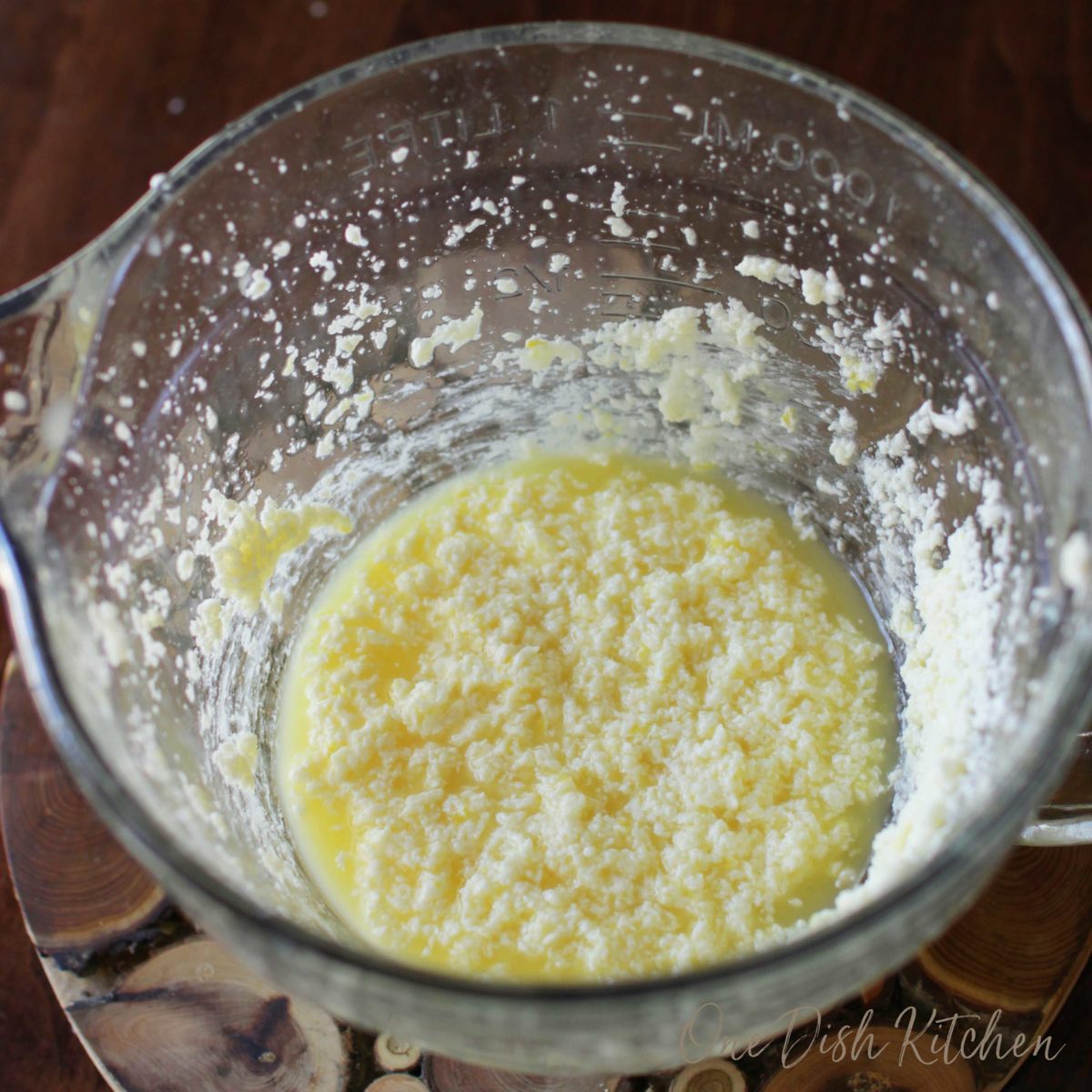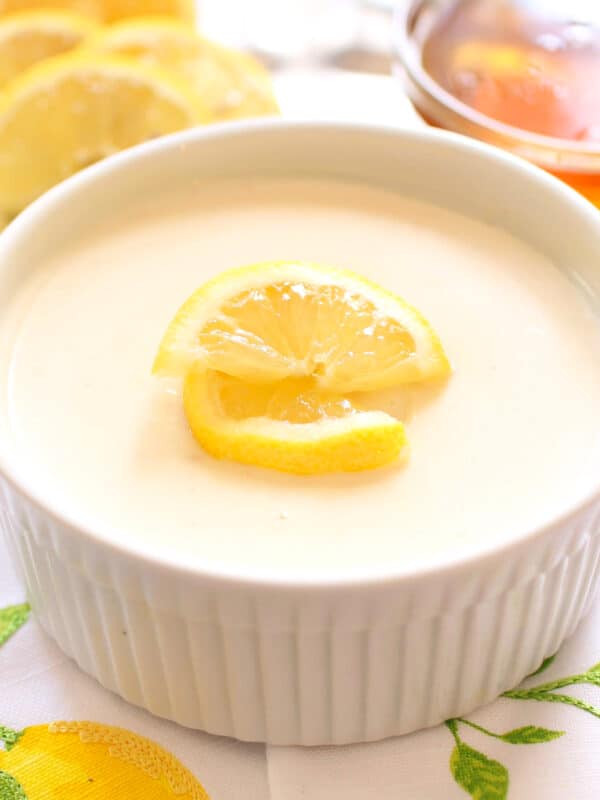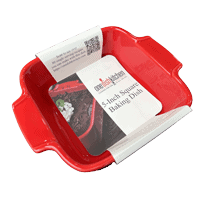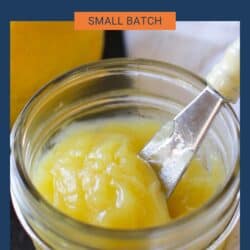This post may contain affiliate links. Please read our disclosure policy.
This small batch lemon curd is bright, creamy, and bursting with fresh lemon flavor! It’s quick to make and perfect for spreading, swirling, or enjoying by the spoonful.

Why You’ll Love This Recipe
- Easy to Make: Simple mixing and whisking.
- Fresh Lemon Flavor: Bright, tangy, and perfectly sweet.
- So Versatile: Use as a spread, topping, or filling.
- Perfect Portion: Small batch size for just the right amount.
- All Natural: Made with fresh lemon juice and zest—no artificial ingredients.
What I love about this lemon curd is the way it captures the sharp, clean flavor of fresh lemons in such a smooth, luxurious way. It’s bright and bold, with just the right balance of tart and sweet, and it comes together quickly in a small pot on the stove.
I love how it instantly elevates anything it touches—from toast to pastries to spoonfuls of whipped cream. This small batch recipe gives you just enough to enjoy now, with a little extra to tuck away for another treat.
Try it swirled into plain or Greek yogurt with a sprinkle of Butter Pecan Granola on top. Or spoon it over Cream Scones, spread it on White Cake, or fill a mini Graham Cracker Crust for a simple, elegant tart.

Featured Comment
“Wonderful recipe! I made a double batch and can’t get enough of it.”
– Sylvia
Ingredients
If you have any ingredients leftover from this small batch lemon curd recipe, check out our Leftover Ingredients Recipe Finder.
- Sugar: Sweetens and balances the tart lemon flavor. Use granulated sugar.
- Butter: Adds a creamy texture.
- Egg: Thickens the curd and makes it rich.
- Lemon Juice: Provides the tart flavor—use freshly squeezed juice for the best taste.
- Lemon Zest: Boosts the lemon flavor. Use only the yellow part of the peel to avoid bitterness.
This recipe makes about 1/4 cup of lemon curd.
Recipe Variations
Try these easy lemon curd variations:
- Lime Curd: Use lime juice and zest instead of lemon for a bold, tangy flavor.
- Orange Curd: Swap in orange juice and zest for a sweeter, less tart version.
- Mixed Citrus Curd: Combine lemon, lime, and orange for a bright, balanced citrus blend.
- Ginger Lemon Curd: Stir in 1/4 teaspoon of finely grated ginger for added warmth and depth.
How To Make Lemon Curd
This method creates a small batch of smooth, flavorful lemon curd. For full ingredient amounts and instructions, see the recipe card below.
Note: Gently cooking the mixture is key. This quick process thickens the curd without curdling the egg, thanks to a simple technique that keeps the texture silky-smooth.
- Cream the butter and sugar: In a mixing bowl, use an electric mixer to beat softened butter and sugar until fluffy. Mix in the egg, then add lemon juice and zest.
Why cream first if it’s going on the stove?
Creaming helps create a smooth texture by incorporating air and evenly distributing the zest. It also helps emulsify the butter and lemon juice, preventing separation and enhancing the flavor.
Note: The mixture may look slightly broken at this point—that’s normal. It will smooth out during cooking.

- Cook the curd: Pour the mixture into a 1-quart saucepan. Cook over medium-low heat, whisking constantly, for about 10 minutes. The curd will thicken and become smooth and glossy.

Expert Tips
- Stir Constantly: Prevent curdling by stirring the mixture the entire time it cooks.
- Use Medium-Low Heat: Gentle heat helps avoid scrambled eggs.
- Strain If Needed: For extra smooth curd, pour through a fine mesh strainer.
- Use Fresh Lemons: Fresh juice and zest give the best flavor.
- Store Properly: Keep in a clean jar in the fridge for maximum freshness.
Frequently Asked Questions
Lemon curd can curdle if the heat is too high or if it’s not stirred constantly while cooking.
It’s ready when it thickens enough to coat the back of a spoon and no longer looks watery or curdled.
Store in an airtight container in the refrigerator for up to 2 weeks.
Yes, lemon curd freezes well. Store in a freezer-safe container for up to 2 months and thaw in the fridge.
RELATED: The Best Homemade Food Gifts
More Recipes With Bright Lemon Flavor
If you love the fresh taste of lemon, here are a few single serving recipes to try next:
Sweet Lemon Treats:
Savory Lemon Dishes:
RELATED: 15 Easy Dessert Recipes For One
Ways To Use Leftover Ingredients
If you have any ingredients leftover from this recipe, check out our Leftover Ingredients Recipe Finder or you might like to consider using them in any of these single serving and small batch recipes:
If you’ve tried this small batch lemon curd recipe or any recipe on One Dish Kitchen please let me know how you liked it by rating the recipe and telling me about it in the comment section below.
If you take a picture please tag us on Instagram (@onedishkitchen) we’d love to see it!
Small Batch Lemon Curd

Equipment
Ingredients
- ¼ cup sugar
- 3 tablespoon salted butter -softened to room temperature
- 1 large egg
- ¼ cup fresh lemon juice
- 1 teaspoon lemon zest
Instructions
- In a small bowl, beat the sugar and softened butter with an electric mixer for 2 minutes.
- Add the egg and beat for 1 minute.
- Mix in the lemon juice and zest. The mixture may look curdled—this is normal.
- Pour into a 1-quart saucepan and cook over medium-low heat, whisking constantly, for 10–12 minutes, until thick and smooth. Do not let it boil.
- Remove from heat and transfer to a bowl or jar. Cover with plastic wrap and chill for at least 1 hour.
Notes
- Stir Constantly: Prevent curdling by stirring the mixture the entire time it cooks.
- Use Medium-Low Heat: Gentle heat helps avoid scrambled eggs.
- Strain If Needed: For extra smooth curd, pour through a fine mesh strainer.
- Use Fresh Lemons: Fresh juice and zest give the best flavor.
- Store Properly: Keep in a clean jar in the fridge for maximum freshness.
Nutrition
The information shown is an estimate provided by an online nutrition calculator. It should not be considered a substitute for a professional nutritionist’s advice.
















Hi Joanie. I’m just wondering why you use such a large saucepan. Can you explain, please. Thanks.
A 1-quart saucepan is actually quite small and just the right size for this recipe. It gives you enough room to whisk the ingredients comfortably without the mixture cooking too quickly along the edges.